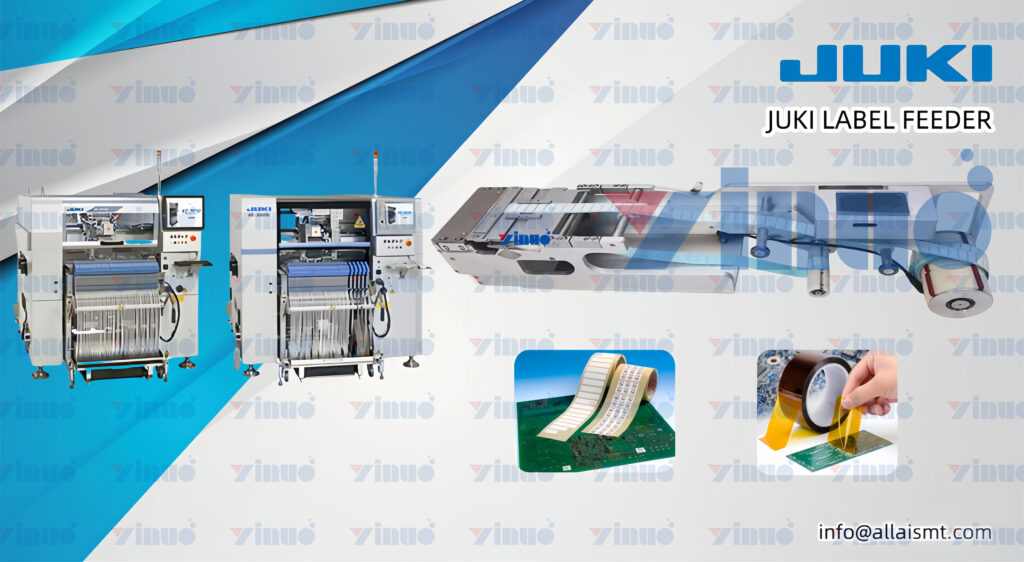How Label Feeders Support Industry 4.0 Initiatives
Industry 4.0 represents the fourth industrial revolution, characterized by the integration of digital technologies, automation, and data exchange in manufacturing processes. Label feeders, as an essential part of automated production lines, play a significant role in supporting Industry 4.0 initiatives. This article explores how label feeders contribute to Industry 4.0 by enhancing connectivity, data-driven decision-making, and overall operational efficiency.
1. Connectivity and Integration
One of the core principles of Industry 4.0 is the interconnectivity of devices and systems, creating a seamless and efficient manufacturing ecosystem. Modern label feeders support this initiative through advanced connectivity features:
1.1 Internet of Things (IoT) Integration
Label feeders equipped with IoT capabilities can connect to a network of devices, enabling real-time communication and data exchange. This connectivity allows label feeders to interact with other machines, sensors, and control systems, optimizing the labeling process and ensuring synchronization across the production line.
1.2 Standard Communication Protocols
To facilitate seamless integration, modern label feeders use standard communication protocols such as OPC-UA, MQTT, and Ethernet/IP. These protocols enable label feeders to communicate with various industrial automation systems, ensuring compatibility and interoperability.
2. Data-Driven Decision Making
Industry 4.0 leverages data analytics and machine learning to improve manufacturing processes. Label feeders contribute to this data-driven approach in several ways:
2.1 Real-Time Data Collection
Modern label feeders are equipped with sensors and software that collect real-time data on labeling performance, including speed, accuracy, and error rates. This data is invaluable for monitoring the efficiency of the labeling process and identifying areas for improvement.
2.2 Predictive Maintenance
By analyzing data collected from label feeders, manufacturers can implement predictive maintenance strategies. This approach involves using data analytics to predict when a label feeder is likely to fail or require maintenance, allowing for proactive interventions that minimize downtime and extend equipment lifespan.
2.3 Quality Control
Data from label feeders can be used to enhance quality control processes. For example, vision systems integrated with label feeders can inspect labels for defects, ensuring that only products with accurate and properly applied labels proceed down the production line. This data-driven quality control reduces the risk of errors and improves overall product quality.
3. Enhanced Automation and Efficiency
Automation is a key component of Industry 4.0, aiming to increase efficiency and reduce manual intervention. Label feeders support enhanced automation in several ways:
3.1 Automated Setup and Calibration
Modern label feeders can automatically calibrate themselves based on the specific requirements of each production run. This automated setup reduces the time and effort required for manual adjustments, allowing for quicker transitions between different products and labeling tasks.
3.2 Adaptive Control Systems
Label feeders with adaptive control systems can adjust their operations in real-time based on feedback from sensors and other connected devices. This adaptability ensures optimal performance, even in dynamic production environments where conditions may change frequently.
3.3 Remote Monitoring and Control
Industry 4.0 emphasizes the importance of remote monitoring and control. Label feeders with remote access capabilities allow operators to monitor performance, troubleshoot issues, and make adjustments from anywhere, enhancing operational flexibility and responsiveness.
4. Scalability and Flexibility
Industry 4.0 requires manufacturing systems to be highly scalable and flexible to adapt to changing market demands and production requirements. Label feeders contribute to this need by offering:
4.1 Modular Design
Many modern label feeders feature a modular design, allowing manufacturers to easily add or remove components based on specific needs. This scalability ensures that label feeders can grow and evolve with the production line.
4.2 Versatile Labeling Capabilities
Label feeders can handle a wide range of label types, sizes, and materials, making them suitable for diverse product lines. This versatility allows manufacturers to quickly adapt to new products and labeling requirements without needing extensive equipment changes.
5. Sustainable Manufacturing
Sustainability is an integral part of Industry 4.0, focusing on reducing waste and optimizing resource use. Label feeders contribute to sustainable manufacturing practices by:
5.1 Reducing Label Waste
Precision and accuracy in label application minimize the waste generated from misaligned or incorrect labels. Advanced label feeders ensure that each label is applied correctly the first time, reducing the need for rework and the associated waste.
5.2 Energy Efficiency
Modern label feeders are designed to be energy-efficient, using advanced motor and control technologies to reduce power consumption. This energy efficiency contributes to the overall sustainability goals of the manufacturing process.
Conclusion
Label feeders play a pivotal role in supporting Industry 4.0 initiatives by enhancing connectivity, enabling data-driven decision-making, improving automation and efficiency, and offering scalability and flexibility. These advanced capabilities not only optimize the labeling process but also contribute to the broader goals of Industry 4.0, such as increased productivity, reduced downtime, and sustainable manufacturing practices. As Industry 4.0 continues to evolve, the role of label feeders in creating smart, interconnected, and efficient production environments will become increasingly important.

